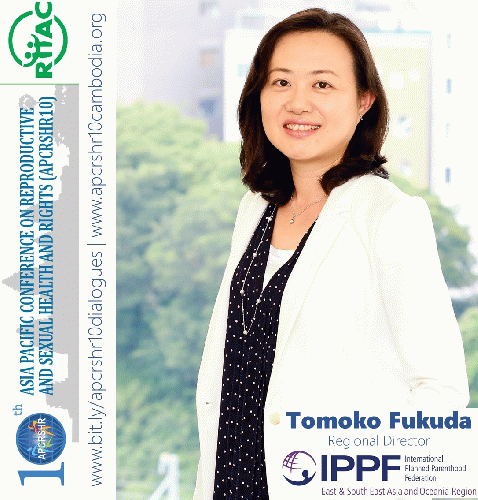
Tomoko Fukuda, Regional Director of Internatonal Planned Parenthood Federation for East and South-East Asia and Oceania
(Image by CNS (Citizen News Service citizen-news.org)) Details DMCA
The Asia Pacific region is home to more than half of the global population and many low-income countries. While the region is witnessing rapid economic growth, gender inequalities persist and sexual and reproductive health (SRH) services are far from being available to all. In the lead up to this year's International Women's Day and the forthcoming 10th Asia Pacific Conference on Reproductive and Sexual Health and Rights (APCRSHR10) in Cambodia, CNS Managing Editor Shobha Shukla spoke with Tomoko Fukuda, Regional Director of the International Planned Parenthood Federation (IPPF) for east, southeast Asia and Oceania region, on advancing gender equality and universal access to sexual and reproductive health and rights in this region.
Here are some excerpts from the interview:
Why is universal and rights-based access to sexual and reproductive health information and services, key to achieving sustainable development goals (SDGs)?
Tomoko Fukuda: Gender equality, and sexual and reproductive health and rights (SRHR), both are vital to achieving the SDGs by 2030. In fact, SRHR is an important component of SDGs-especially SDG-3 and SDG-5. Likewise, the Nairobi statement of ICPD25 also commits to achieve universal access to SRHR information and services by 2030. Therefore it is essential that SRHR becomes the fundamental driver to achieve the SDGs. Women form more than 50% of the population. So unless women have access to quality healthcare and their human rights are protected, we cannot achieve any of the SDGs.
Where are we in the Asia Pacific region on SRHR, in terms of the 2020 realities and the 2030 SDG targets?
Tomoko Fukuda: The region has made great progress in terms of maternal and new born health, and awareness around contraceptives, family planning and HIV/AIDS, but there still are many areas that need more attention, especially in terms of providing the full spectrum of quality SRHR services to all, preventing unsafe abortions and accessing safe abortion services. Also, the right to control one's own body and discussions around sexuality and diversity in sexual orientations and gender identities have not been looked into in relation to what we have achieved in terms of maternal and child health care and family planning services.
Many countries in this region have developed economically, but economic growth has not resulted in gender equality and improvement in SRHR services. Then again, we have populations like migrant workers, internally displaced persons, undocumented citizens or even unmarried single parents who are being left behind. In Japan we recently had an issue where unmarried single mothers could not receive the same benefits as those who were married, divorced or widowed. These inequalities are there which we still have to tackle.
What are some of the top priority SRHR issues in the Asia Pacific region?
(Note: You can view every article as one long page if you sign up as an Advocate Member, or higher).





